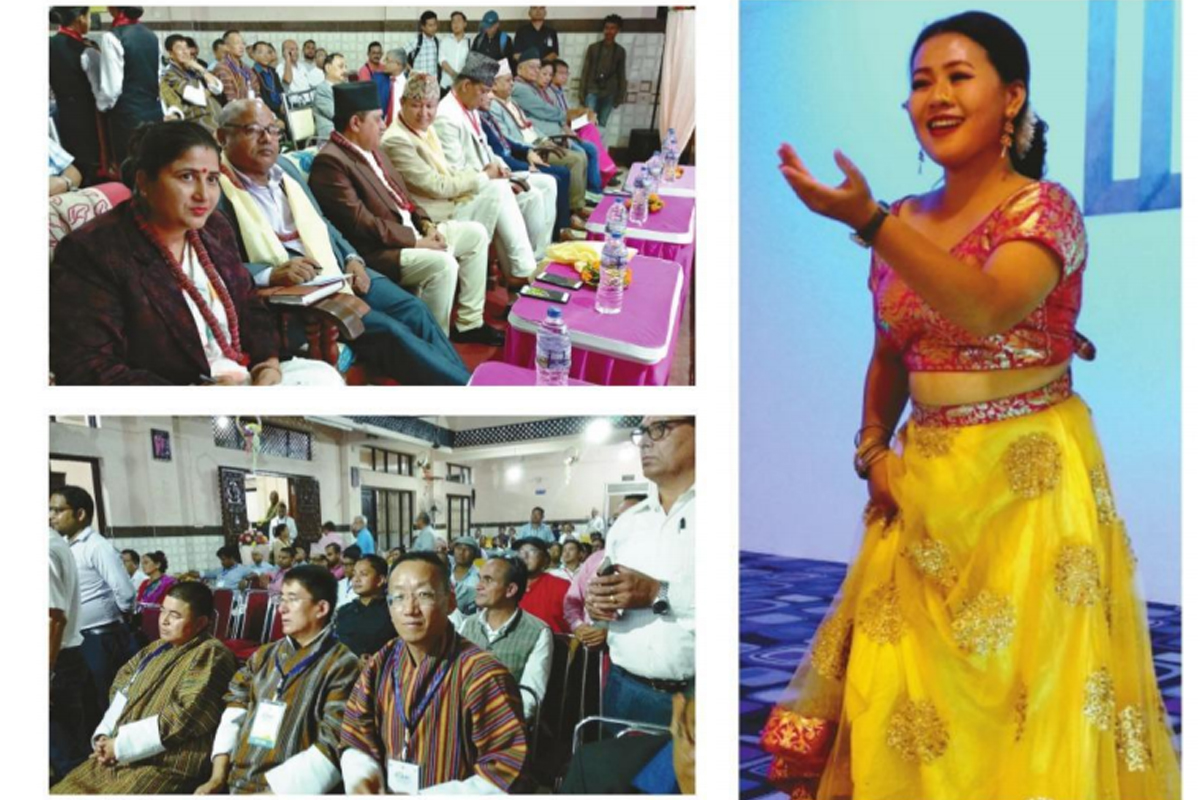As the East Tourism Mart-2019 (ETM) ended recently, all stakeholders associated with the tourism industry in Eastern Nepal have started popularizing the “Visit Nepal 2020” slogan so as to attract more tourists from different countries, especially from India’s West Bengal via Siliguri, a corridor that connects some countries in South Asia.
Nepal is rich in natural beauty and culture in the Himalayan landscape, and the eastern part of the country under Province-1 is no exception, but it is not very popular among tourists, who love to tour the different Hill areas in North Bengal and Sikkim, and even Bhutan.
Advertisement
A group of tour operators in Eastern Nepal is trying hard to promote their region as well as their products in different forms by keeping in touch with tour operators in North Bengal, Sikkim, Kolkata and even in other states in India and other countries. Notably, despite their efforts, a group of tour operators in North Bengal allegedly does not support them in terms of business in the Indian part comprising Sikkim, Darjeeling and the Dooars.
Notably, the Coordinator of the ETM2019 Bhabish Kumar Shrestha, signed a Memorandum of Understanding (MoU) with a group of Tour Operators from Sikkim.
Besides nature and adventure tourism, officials of the Nepal Tourism Board (NTB) are also trying to promote religious tourism to attract people, who frequently visit Kalighat in Kolkata in West Bengal and Kamakhya in Guwahati in Assam.
The NTB organised the second edition of the ETM in Dharan, Sunsari, Nepal, from 21 to 23 September. The place is located in the Eastern part of Nepal, about 150 km West from Siliguri.
“After the ETM last year, the tourist flow has gone up this year. The 2nd edition of the ETM has been organised by showcasing the ‘Visit Nepal 2020,'” Chief Minister of Province-1, Sher Dhan Rai, said.
Apparently confident, Mr Rai said more tourists will be Eastern Nepal-bound next year.
According to the Manager of the NTB, Nabin Pokharel, who was the Coordinator of the ETM-2019 Implementing Subcommittee, Eastern Nepal has several beautiful tourism spots. Besides the highest mountain of the world, Everest, there are the famous Shakti PeethPathibhara Devi, Dantakali, and Chhinnamasta (Shakhada Bhagawati), and other centers of religiously and spiritually important temples and regions like Pindeshwar and Baraha Kshetra.
Mr Pokharel, who has been advocating for a short film on the Shakti Peeth Circuit in Eastern Nepal, in connection with Bengal and Assam on the Indian side, so that people can easily understand the value of these places, says: “We need to bring some influential personalities to promote those areas like Pathivara and Dantakali.”
“East Nepal presently cannot offer first class tourism facilities and services to cater to high-end market. In such conditions, the zeal to get blessings of the ‘Maa’, with religious or spiritual purposes, can be a driving force to get people into the region, irrespective of the facilities. Once people come to this region, the natural beauty of this place obviously adds up to the satisfaction of the visitors,” he said.
Echoing Mr Pokharel, another official said: “The tourist spot of Pathibhara can be a major attraction for two types of tourists. Besides religious tourism, another group of tourists interested in trekking for at least four km, a secondary route to trek, can be attracted to watch and enjoy the snowy Kanchenjunga.”
The temple is located at an elevation of 3,794 metres (12,444.32 ft), and serves as a secondary route to the Kanchenjunga trek. After the Gorkha (Khas) invasion of Limbuwan, the holy temple of the Limbu people (Manghim in Limbu language) was also included into mainstream Hinduism and is worshiped as one of the Hindu Shaktipeeths without changing the earlier belief or the practices of the Limbu people.
At a time when NTB officials and stakeholders have been showcasing Visit Nepal-2020, a section of stakeholders has eagerly been requesting the government to come forward to usher in development.
One of them, Vasudev Baral, associated with Sechha Travelling in Dharan, said: “We don’t have government property to promote a new destination. We have been requesting our government to set up its own property like a guest house in a new destination to attract tourists. As tourists come, local people will automatically engage themselves in tourism promotion after setting up their property.”
However, Itahari-based hotelier associated with Hotel Intourist Palace, Jiwan Parajuli, said: “We have invested whatever money we had. In fact, we are exhausted. To run the private property properly, the government should come forward now and develop basic infrastructure immediately by improving connectivity and other requirements for the development of the tourism industry.”
Similarly, Pokhara-based Managing Director, Fishtail Holidays Pvt Ltd, Rajesh Pahari, says: “We have been demanding an air service between Biratnagar and Pokhara for a long time now. We think this service will attract more tourists and develop both the Eastern part of Nepal and Pokhara. If the government can begin the air services, it will benefit people on both sides of the border.”
In the ETM-2018, CM Rai had pointed out his government’s plans to develop Biratnagar Airport in the interest of tourism. As a result, stakeholders in the tourism industry are expecting more development from the government’s end.
During the visit to Eastern Nepal, very significantly, it was noticed that people were expecting more development work from a Communist Government. It was also noticed that some working class of people were saying: “A section of people is rich here, but the Nepal government is poor.
Apart from that, many of them still recalled the era of King Birendra Bikram Shah Dev and developments that happened in the country during his tenure.









